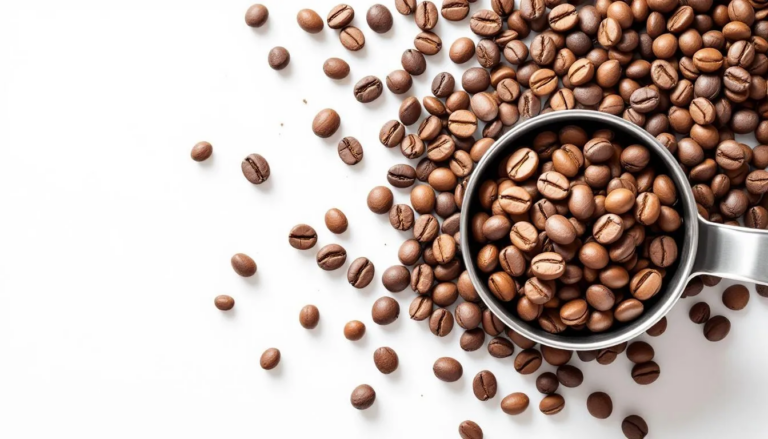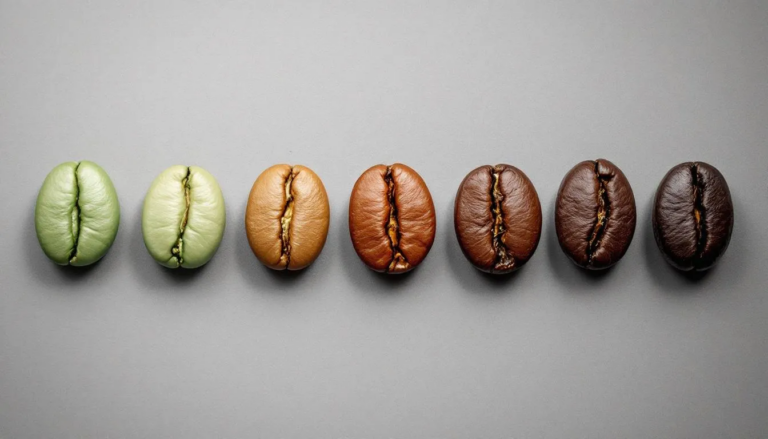Looking for good Colombian coffee? Enjoy high-quality good Colombian coffee isn’t hard to find if you know where to look! This guide will highlight the best Colombian coffees, their unique characteristics, and top brewing methods to enjoy them. Discover what makes Colombian coffee stand out globally and how you can choose the best beans for your taste. Colombian coffee brands, such as Juan Valdez, are renowned for their global reputation and commitment to sustainability and ethical farming practices.
Introduction to Colombian Coffee
Colombian coffee is renowned for its exceptional quality and rich history. With a reputation for producing some of the world’s best coffee, Colombia has become a benchmark for coffee connoisseurs. From the Andean region to the coffee-growing axis, Colombia’s unique combination of natural conditions, farming traditions, and commitment to quality contributes to its excellence. In this section, we will delve into the world of Colombian coffee, exploring its history, production methods, and what makes it so special.
Key Takeaways
- Colombia’s diverse landscapes and climates create unique coffee flavor profiles across various regions like the Coffee Triangle, Huila, and Nariño, each offering distinct characteristics.
- Colombian coffee stands out due to its exclusive use of high-quality Arabica beans, traditional hand-picking practices, and nutrient-rich volcanic soil that significantly enhance flavor.
- Optimal brewing methods such as French press, pour-over, and espresso can highlight the delightful flavors of Colombian coffee, and paying attention to factors like roast date and certifications ensures quality.
Amazing Colombian Coffee regions
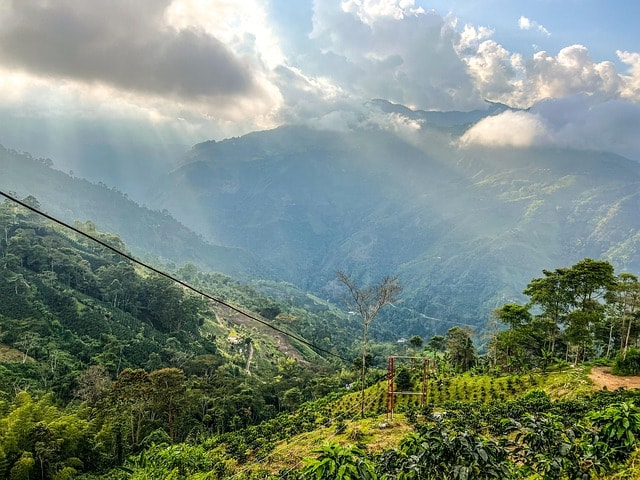
Colombia is a paradise for coffee growers, thanks to its diverse landscapes and climates that create ideal conditions for coffee cultivation. The country boasts several renowned coffee-growing regions, each with its unique characteristics and flavor profiles. One of the most famous regions is the Coffee Triangle, which includes the departments of Caldas, Quindío, and Risaralda. This area is known for producing some of the best Colombian coffee, with beans that have a balanced acidity and a rich, full-bodied flavor.
Another notable region is Huila, located in the southwestern part of the country. Huila’s high elevation and volcanic soil contribute to the exceptional quality of its coffee beans. Coffee from this region often exhibits complex flavor profiles with notes of caramel, chocolate, and fruit.
Beyond these well-known regions, Colombia has many other areas where coffee is grown to perfection. Each region’s unique combination of altitude, soil, and climate contributes to diverse and flavorful profiles, setting Colombian coffee apart globally.
Whether you’re a coffee enthusiast or just someone who appreciates a good cup of coffee, coffee drinkers exploring the different regions of Colombia will give you a deeper appreciation for the art of coffee cultivation in this beautiful country.
Unique Characteristics of Colombian Coffee
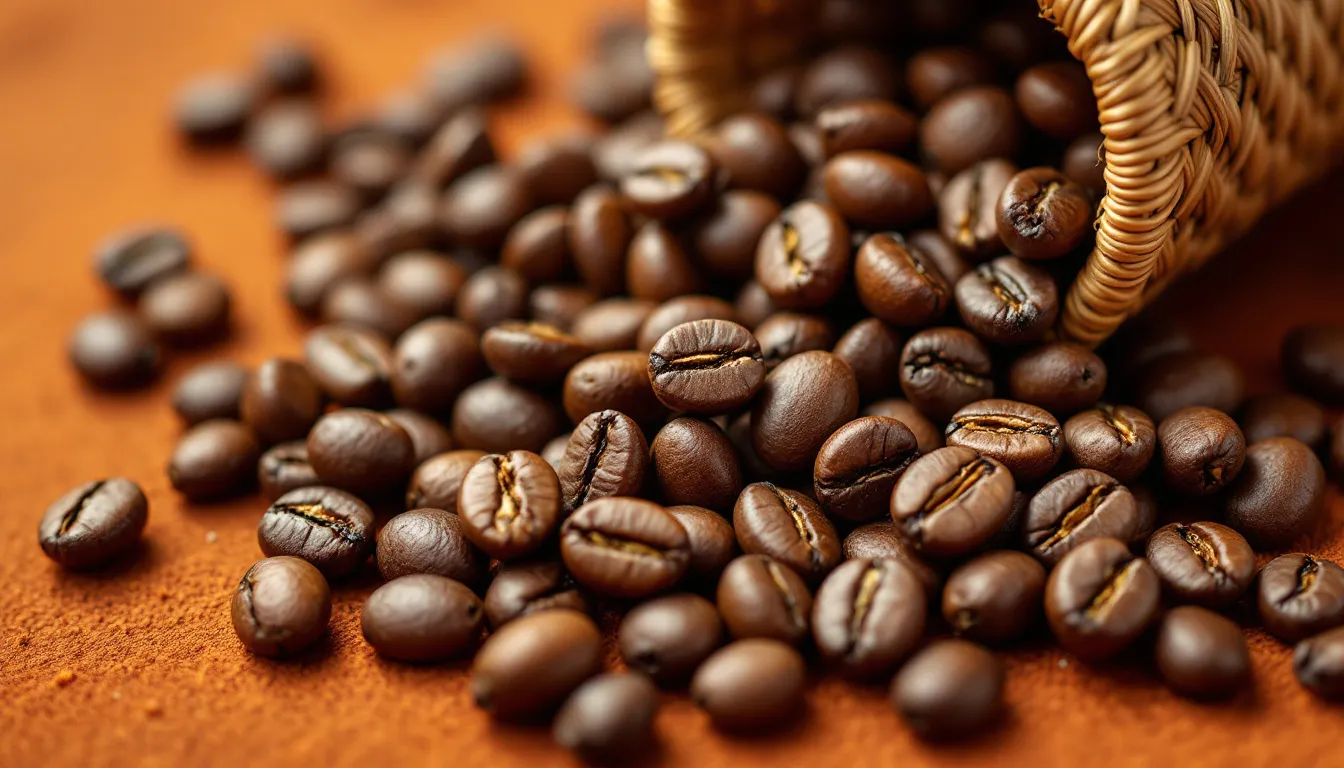
What sets Colombian coffee apart from other coffees around the world? It’s a combination of factors that contribute to its distinct flavor and high quality. Colombian coffee is made exclusively from Arabica beans, known for their smooth and rich flavor. These coffee beans are grown primarily on small-holder farms at high altitudes, where the unique climate and geographical features play a significant role in shaping their taste.
Tropical climates, high elevations, and consistent rainfall in Colombia create an ideal environment for coffee plants to thrive. Traditional farming methods used by Colombian farmers ensure that only the ripest cherries are selected, resulting in superior quality coffee beans. Handed down through generations, these practices reflect the deep cultural heritage associated with coffee cultivation in Colombia.
Moreover, the diverse flavor profiles of Colombian coffee are influenced by the different regions where it is grown. Single-origin coffees from Colombia allow you to explore the distinct taste profiles associated with specific regions, offering a unique and delightful coffee experience. From fruity and floral notes to rich chocolate and nutty undertones, the variety of flavors in Colombian coffee is truly remarkable.
Ideal Growing Conditions
The ideal growing conditions in Colombia are a significant factor in the exceptional quality of its coffee beans. The country’s climate features consistent temperatures year-round, which contributes to stable growing conditions for coffee. The Andes Mountains provide the perfect altitude range, from 1,200 to 2,000 meters above sea level, where coffee plants thrive. This high elevation results in beans with bright acidity and vibrant flavors.
Additionally, the volcanic soil in Colombia is rich in nutrients, thanks to the ashes from volcanic eruptions that enhance the soil’s fertility. These mineral-rich soils provide the essential nutrients that coffee plants need to grow high-quality beans. The combination of climate, altitude, and fertile volcanic soil creates the perfect environment for cultivating top-notch coffee beans with unique flavor notes.
Traditional Farming Methods
Colombian coffee production is deeply rooted in tradition, with many farmers still relying on hand-picking methods to ensure the selection of only the ripest cherries. This meticulous process enhances flavor consistency and quality, as only the best cherries are chosen for processing. Focusing on the ripest cherries allows Colombian farmers to produce coffee with superior flavor and aroma.
Some farmers in Colombia prefer traditional techniques over modern machinery to maintain the quality of their coffee. These practices, passed down through generations, reflect the cultural heritage and dedication of Colombian farmers to producing high-quality coffee. The commitment to traditional farming methods is a key factor in the exceptional quality of Colombian coffee.
Diverse Flavor Profiles
One of the most exciting aspects of Colombian coffee is its diverse flavor profiles. Specialty coffees, which emphasize high quality and direct sourcing from producers, further enhance this experience. Depending on the region where the coffee is grown, you can experience a wide range of flavor notes, including fruity, floral, nutty, and chocolatey. Notable characteristics of Colombian coffee include bright acidity, balanced body, and complex profiles, making it a favorite among coffee enthusiasts.
For example, coffee from Aponte Village presents unique flavor notes such as toffee, caramel, cherry, and apple. Similarly, Huila Decaf Colombia coffee exhibits delightful notes of dark chocolate, toffee, and caramel.
These diverse flavor profiles are influenced by the different regions and brewing methods used, offering a rich and varied coffee experience for coffee lovers.
Factors Influencing Colombian Coffee’s Taste
The taste of Colombian coffee is influenced by several factors, including the methods used for harvesting, processing, and roasting the coffee beans. In coffee production, green coffee beans are often treated with alcohol to remove caffeine while preserving flavor, showcasing the significance of green coffee in maintaining the quality and taste of beverages, such as Colombian decaf coffee. Colombian farmers ensure the quality of their coffee by sorting the beans by hand to remove under-ripe or overripe beans. This meticulous attention to detail helps maintain the high standards of Colombian coffee and contributes to its exceptional flavor.
Hand-sorting complements the processing methods used by Colombian farmers, both playing a crucial role in shaping the coffee’s taste. The wet processing method, which involves carefully picking and washing the coffee cherries, is commonly used in Colombia. This method helps develop a highly acidic and fruity flavor profile, enhancing the overall taste of the coffee.
Finally, the roast level of the coffee beans can significantly impact their flavor. Different roast levels bring out different flavor notes, resulting in a unique tasting experience for each type of Colombian coffee. Whether you prefer a light roast that maintains more of the bean’s original flavors or a dark roast with bolder notes, the roast level is an important factor to consider when choosing Colombian coffee.
Coffee Cherries Harvesting
The timing of the coffee cherry harvest is crucial for achieving high-quality coffee flavor and characteristics. Beans picked at their peak ripeness offer enhanced flavor and quality, making the harvesting process a critical step in coffee production. Colombian farmers take great care to ensure that only the ripest cherries are selected, resulting in a superior coffee bean.
By focusing on peak ripeness, Colombian farmers can produce coffee with a rich and complex flavor profile. This meticulous approach to harvesting is one of the factors that sets Colombian coffee apart from other coffees around the world.
The dedication to quality at every stage of production, from harvesting to processing and roasting, ensures that Colombian coffee remains a favorite among coffee enthusiasts.
Processing Methods
The processing methods used in Colombia are another key factor in the coffee’s exceptional taste. Colombian coffee is typically processed using the wet processing method, which involves carefully picking and washing the coffee cherries. This method helps develop a highly acidic and fruity flavor profile, enhancing the overall taste of the coffee.
In some regions, coffee beans are dried in parabolic dryers without washing, and the drying process can take up to 15 days. These specific processing methods contribute to the unique flavor profiles of Colombian coffee, resulting in a diverse and delightful coffee experience for coffee lovers.
Roast Levels
The roast level of coffee beans plays a significant role in determining their flavor profile. Lighter roasts tend to maintain more of the bean’s original flavors, while darker roasts introduce bolder notes. Different roast levels can bring out different flavor notes in Colombian coffee, resulting in a unique tasting experience for each type of coffee.
Whether you prefer a medium roast with a balanced flavor or a dark roast with robust and bold flavors, the roast level is an important factor to consider when choosing Colombian coffee. Experimenting with different roast levels can help you discover the perfect coffee that suits your taste preferences.
Top Picks for Colombian Coffee
Colombian coffee is a staple in many coffee shops and households around the world. With so many great options available, it can be difficult to choose the best one. Here are our top picks for Colombian coffee, featuring some of the most popular and highly-regarded brands.
Café San Alberto (Buenavista, Quindío)
Café San Alberto is a must-visit for coffee connoisseurs. Located in Buenavista, Quindío, this café serves some of the best coffee in Colombia, prepared using alternative methods. Visitors can organize a private coffee experience, including a plantation tour and tasting session. With stunning views and a cozy atmosphere, Café San Alberto is a great place to relax and enjoy a cup of exceptional coffee.
Café La Floresta (Pijao, Quindío)
Café La Floresta is a hidden gem in the non-touristy town of Pijao, Quindío. This café serves specialty coffee at an affordable price, prepared using alternative methods such as Chemex. With a cozy atmosphere and friendly staff, Café La Floresta is a great place to try some of the best coffee in Colombia.
Café Jesús Martín (Salento, Quindío)
Café Jesús Martín is located in Salento, Quindío, and serves some of the best coffee in Colombia. This café offers a variety of coffee drinks, including cappuccinos and lattes, and runs an excellent coffee tour. Visitors can try their specialty coffee, Café Angela, which is black coffee with condensed milk. With a cozy atmosphere and knowledgeable staff, Café Jesús Martín is a great place to learn about and enjoy Colombian coffee.
Best Brewing Methods for Colombian Coffee
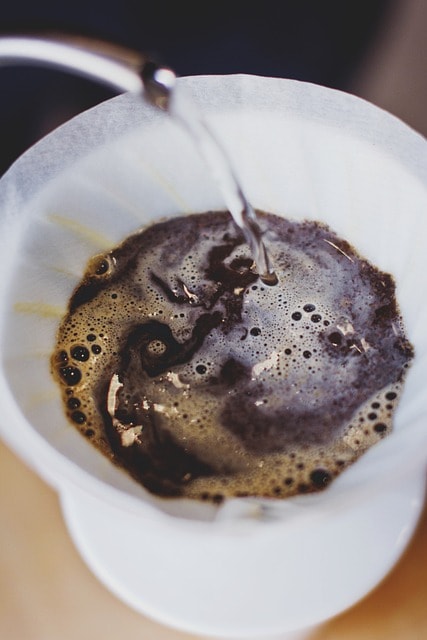
To truly appreciate the rich flavors of Colombian coffee, it’s essential to use the right brewing methods. Some of the best methods to enhance the flavor of Colombian coffee include the French press, pour-over, and espresso.
Each of these methods allows different aspects of the coffee’s taste to shine, providing a unique and enjoyable coffee experience.
French Press
Using a French press is an excellent way to brew Colombian coffee, as it allows for a full-bodied extraction that enhances the bold flavors of the coffee. The French press method involves steeping the coffee grounds in hot water before pressing the plunger to separate the grounds from the liquid. This method captures the rich and indulgent character of Colombian coffee, making it a favorite among coffee enthusiasts.
For optimal extraction, it’s recommended to use a coffee-to-water ratio of 1:15. This ratio ensures that the flavors are well-balanced and that the coffee’s natural oils and essences are fully extracted. The result is a cup of coffee that is rich, robust, and full of flavor.
Pour-Over
The pour-over method is ideal for showcasing the bright acidity and fruity notes of Colombian coffee. This brewing technique involves pouring hot water over coffee grounds in a slow and intentional manner, allowing the water to draw out the unique flavors of the coffee. The result is a clean and crisp cup of coffee that highlights the coffee’s natural characteristics.
Using a pour-over method, such as a Chemex or a Hario V60, allows coffee lovers to control the brewing process and adjust variables like water temperature and pour rate. This level of control helps to enhance the coffee’s taste and ensures that each cup is brewed to perfection.
Espresso
Brewing espresso with Colombian coffee beans can result in a smooth and robust flavor profile that is simply delightful. Espresso brewing involves forcing hot water through finely ground coffee at high pressure, which extracts the coffee’s intense flavors and creates a rich, concentrated shot of coffee.
Colombian coffee is well-suited for espresso brewing because of its balanced acidity and complex flavor notes. Whether you enjoy your espresso straight or as the base for a latte or cappuccino, using high-quality Colombian coffee beans will elevate your specialty coffee experience.
Why Choose Colombian Coffee?
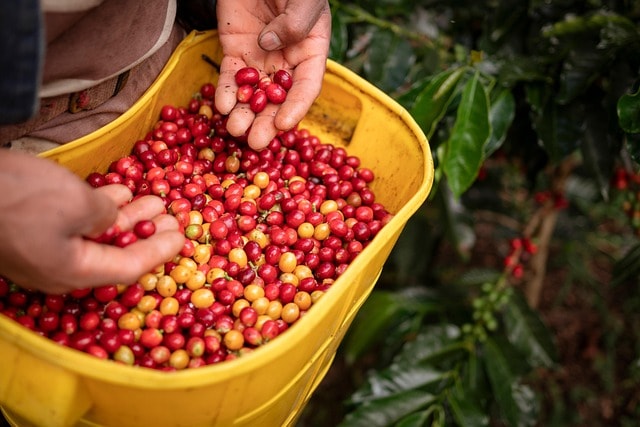
Colombian coffee is celebrated globally for its premium quality and diverse flavors. The National Federation of Coffee Growers of Colombia, with over 513,000 farmer members, ensures that Colombian coffee maintains its high standards and strong international presence. From fruity and floral notes to rich chocolate and nutty undertones, Colombian coffee offers a unique and delightful drinking experience.
Superior Quality
One of the main reasons to choose Colombian coffee is its superior quality. The coffee beans are carefully chosen and grown at high elevations, resulting in high-quality Colombian coffees with a rich flavor and robust profile. Additionally, many Colombian coffee brands are renowned for their exceptional taste, making it a great coffee choice.
Colombian coffee has been an integral part of the country’s economy and identity since the 18th century, contributing to its esteemed reputation in the global market.
Rich Cultural Heritage
Colombian farmers use hand-picking and traditional processing methods to maintain high-quality coffee production. These practices reflect the rich cultural heritage of Colombia and the dedication of its Colombian coffee growers to producing exceptional coffee.
Sustainable Practices
Sustainable farming practices are increasingly vital in the Colombian coffee industry, ensuring environmental responsibility and long-term viability. Colombian coffee producers often follow environmentally friendly methods, like shade-grown cultivation and organic farming, which contribute to the overall quality and sustainability of the coffee.
The dedication of Colombian farmers to sustainable and ethical production enhances the reputation of Colombian coffee. By choosing Colombian coffee, you are supporting small farmers and environmentally responsible practices, which ultimately contribute to the superior quality of the coffee.
Tips for Buying Good Colombian Coffee

When selecting Colombian coffee, it’s essential to consider a few key factors to ensure you are getting the best quality coffee. Reading the labels for essential details like roast type and origin can help you make an informed choice.
Look for Certifications
Certifications play a crucial role in ensuring that consumers receive high-quality and ethically sourced Colombian coffee. Choosing certified coffees, such as those with Fair Trade or Juan Valdez labels, assures consumers of both quality and ethical sourcing practices.
Fair Trade certification promotes ethical sourcing, ensuring that coffee growers receive fair compensation and that sustainable farming practices are upheld. Choosing certified coffees allows you to enjoy your cup of coffee, knowing it was produced responsibly and ethically.
Check Roast Date
Checking the roast date is vital to ensure coffee freshness. Freshly roasted Colombian coffee should ideally be consumed within two to four weeks post-roasting for optimal flavor. When buying coffee, look for a recent roast date rather than a best-by date, as coffee typically loses flavor after two to three weeks.
Verifying the roast date ensures that you are purchasing fresh coffee for the best flavor experience. Freshness is crucial for flavor, so always check the roast date before making a purchase.
Choose Single-Origin
Single-origin coffees offer a unique insight into the specific flavors associated with different regions. Colombian coffee presents a wide range of flavor profiles, from fruity and floral notes to rich chocolate and nutty undertones. Choosing single-origin coffees allows you to explore these distinct taste profiles and appreciate the unique characteristics of each region.
A great place to start for trying out Colombian coffee is with Coopers Cask Coffee Colombian offerings. Roasted at a medium dark Coopers perfectly extracts every once of flavor out of their high quality Colombian beans. Give them a look at their website here as well as all their other offerings!
Colombia’s climate, altitude, and fertile volcanic soil contribute significantly to the superior quality of its coffee beans. Selecting single-origin Colombian coffee lets you experience the diverse and delightful flavors that make Colombian coffee so special.
Summary
In summary, Colombian coffee offers a rich and diverse coffee experience, thanks to its ideal growing conditions, traditional farming methods, and unique flavor profiles. The factors influencing the taste of Colombian coffee, such as harvesting methods, processing methods, and roast levels, all contribute to its exceptional quality. By using the best brewing methods, such as French press, pour-over, and espresso, you can fully appreciate the rich flavors of Colombian coffee.
Choosing Colombian coffee means supporting a rich cultural heritage and sustainable farming practices. When buying Colombian coffee, look for certifications, check the roast date, and select single-origin coffees to ensure you are getting the best quality coffee. With these tips in mind, you can enjoy a delightful and flavorful coffee experience that embodies the essence of Colombia.
Frequently Asked Questions
What makes Colombian coffee unique?
Colombian coffee stands out because of its perfect growing conditions, including high altitudes and volcanic soil, which create rich and complex flavors. These factors, along with traditional farming methods, make it a true gem in the coffee world.
What are the best brewing methods for Colombian coffee?
For the best experience with Colombian coffee, go for a French press, pour-over, or espresso. Each method really brings out those delicious flavors you’re gonna love!
Why should I choose single-origin Colombian coffee?
Choosing single-origin Colombian coffee is a no-brainer because it showcases the unique flavors tied to specific regions, letting you savor those distinct characteristics in every cup. You’re in for a delicious experience!
How can I ensure I am buying fresh Colombian coffee?
To guarantee you’re getting fresh Colombian coffee, always check the roast date on the package; aim for beans roasted within the last two to four weeks for the best taste. Enjoy that vibrant flavor!
What certifications should I look for when buying Colombian coffee?
When buying Colombian coffee, check for certifications like Fair Trade and Juan Valdez. They guarantee quality and ensure that farmers are paid fairly and sustainably.

